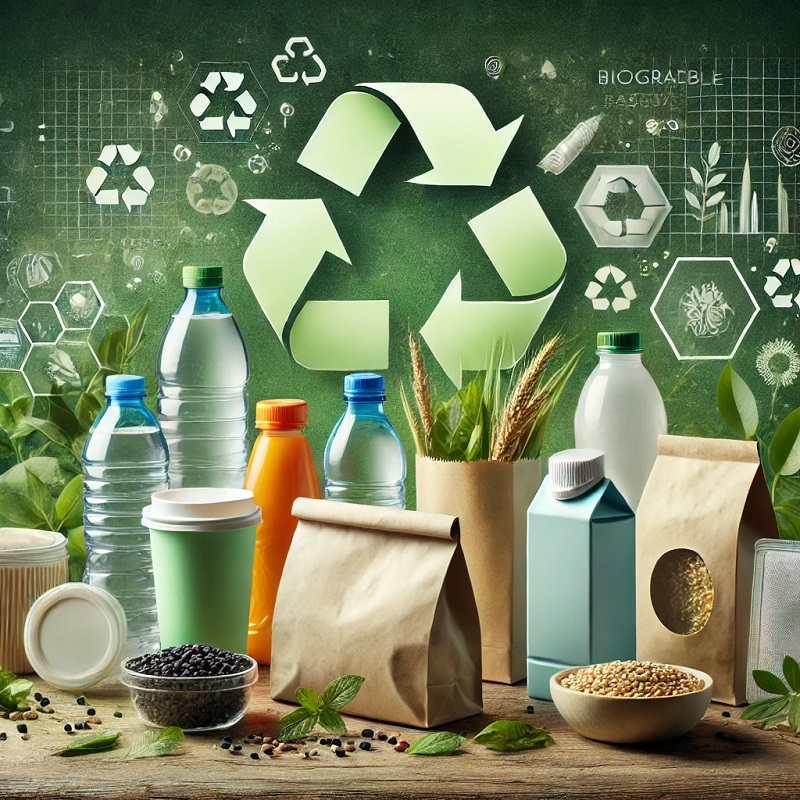The Biodegradable Plastic Packaging Market is poised for significant growth from 2024 to 2032, driven by increasing environmental concerns and regulatory support for sustainable alternatives.
Key material types include starch-based plastics, cellulose-based plastics, polylactic acid (PLA), polyhydroxyalkanoates (PHA), polybutylene succinate (PBS), and polybutylene adipate terephthalate (PBAT), among others. These biodegradable solutions find applications in food, beverage, pharmaceutical, and personal/homecare packaging, catering to rising consumer demand for eco-friendly packaging.
The market is shaped by a dynamic partner and customer ecosystem, emphasizing innovative product services and key propositions. With a competitive landscape and diverse regional footprints, major players are focusing on advanced materials, partnerships, and regulatory compliance to strengthen their market presence.
Major Players In Biodegradable Plastic Packaging Market Include: Tetra Pak International SA, Amcor PLC, Bemis Company Inc., Mondi PLC, Rengo Co. Ltd, DS Smith PLC, Klabin SA, Plastic Suppliers Inc., Arkema S.A, BASF SE, ZEROPACK (Bio-On), Biome Bioplastic Limited, Total Corbion PLA, Danimer Scientific Inc., Dow Chemical.
Get the Sample Research Report Copy on Biodegradable Plastic Packaging Market: https://www.marketdigits.com/request/sample/715
Market Trends:
The biodegradable plastic packaging market is witnessing a surge in demand due to increasing consumer preference for sustainable and eco-friendly packaging solutions. Advancements in biopolymer technologies and innovations in compostable packaging are further enhancing product performance and expanding application areas.
Market Drivers:
Stringent government regulations banning single-use plastics and promoting sustainable alternatives are fueling market growth. Additionally, rising environmental awareness among consumers and businesses is driving the adoption of biodegradable packaging across industries such as food, beverage, and pharmaceuticals.
Market Restraints:
High production costs and limited industrial composting infrastructure pose challenges to widespread adoption. Moreover, the performance limitations of biodegradable plastics, such as reduced durability compared to conventional plastics, may hinder market expansion in certain applications.
Market Scope:
The biodegradable plastic packaging market encompasses a broad range of sustainable materials, including starch-based plastics, cellulose-based plastics, polylactic acid (PLA), polyhydroxyalkanoates (PHA), polybutylene succinate (PBS), and polybutylene adipate terephthalate (PBAT). These materials are widely used in industries such as food, beverages, pharmaceuticals, and personal/homecare, where sustainable packaging solutions are increasingly prioritized.
The market is driven by regulatory policies, growing environmental awareness, and advancements in biodegradable polymer technologies. Geographically, the market spans North America, Europe, Asia-Pacific, Latin America, and the Middle East & Africa, with Europe leading due to stringent plastic waste regulations and Asia-Pacific experiencing rapid growth due to rising consumer awareness and industrial expansion. The market is further shaped by key partnerships, product innovations, and the competitive landscape, where companies focus on enhancing product performance and cost efficiency.
Major Classifications are as follows:
By Type
Starch Based plastic
Cellulose Based Plastics
Polylactic Acid (PLA)
Polyhydroxyalkanoates (PHA)
Polybutylene Succinate (PBS)
Polybutylene Adipate Terephthalate
Other Plastic Types
By Application
Food
Beverage
Pharmaceutical
Personal/Homecare
Others
By Region
North America
US
Canada
Latin America
Brazil
Mexico
Argentina
Rest of Latin America
Europe
UK
Germany
France
Italy
Spain
Russia
Rest of Europe
Asia Pacific
China
Japan
India
South Korea
Rest of Asia Pacific
Rest of the World
Middle East
UAE
Saudi Arabia
Israel
Rest of the Middle East
Africa
South Africa
Rest of the Middle East & Africa
Get the complete view of 157 Pages Market Research Report on Biodegradable Plastic Packaging: https://www.marketdigits.com/biodegradable-plastic-packaging-market-1690193409
FAQs on Biodegradable Plastic Packaging Market
What is the demand for biodegradable plastic bags?
The demand for biodegradable plastic bags is witnessing substantial growth due to global initiatives to reduce plastic waste and promote eco-friendly alternatives. While specific market size data for biodegradable plastic bags is limited, they represent a key segment within the overall biodegradable plastics market, with increasing adoption across retail, grocery, and food service industries. The shift towards compostable and biodegradable bags is further accelerated by regulatory policies restricting conventional plastic usage.
What percentage of packaging is biodegradable?
Biodegradable packaging currently accounts for a small yet growing fraction of the total packaging market. While exact percentages vary across regions and industries, the rising adoption of biodegradable materials in food, beverage, and personal care packaging is contributing to the market's expansion. Many companies are integrating biodegradable alternatives to meet sustainability goals and comply with government regulations on eco-friendly packaging.
What is the future of biodegradable packaging?
The future of biodegradable packaging is highly promising. Factors such as technological advancements, increasing investments in sustainable materials, and growing consumer awareness are driving its expansion. Additionally, brands and manufacturers are actively developing high-performance biodegradable solutions to meet the evolving demands of environmentally conscious consumers.
What is the most popular biodegradable plastic?
Polylactic Acid (PLA) is among the most widely used biodegradable plastics, recognized for its compostability and versatility. Derived from renewable resources such as corn starch and sugarcane, PLA is extensively used in packaging, disposable tableware, 3D printing, and biomedical applications. Its widespread adoption is attributed to its ability to decompose under industrial composting conditions, making it a preferred alternative to conventional plastics.
Other Trending Reports
Flexible Packaging Market: https://www.marketdigits.com/flexible-packaging-market-1690191862
Smart Packaging Market: https://www.marketdigits.com/smart-packaging-market-1694177146
Caps & Closures Market: https://www.marketdigits.com/caps-closures-market-1695883168



